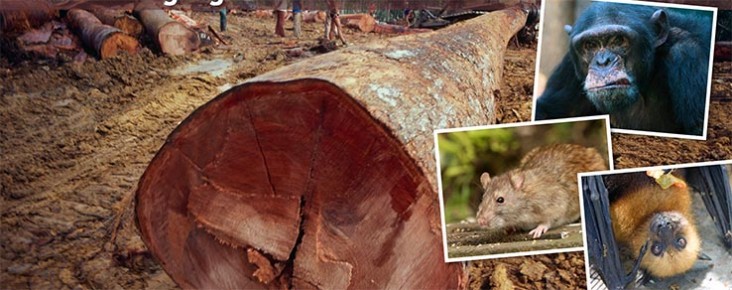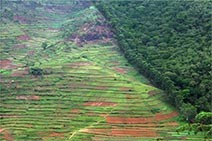- What We Do
- Agriculture and Food Security
- Democracy, Human Rights and Governance
- Economic Growth and Trade
- Education
- Ending Extreme Poverty
- Environment and Global Climate Change
- Gender Equality and Women's Empowerment
- Global Health
- Water and Sanitation
- Working in Crises and Conflict
- U.S. Global Development Lab

The Extractive Industry (mining, petroleum, logging, and agri-business) is closely associated with dynamics and practices that contribute to habitat change, changes in population settlements, and increased population mobility three factors critical to triggering the “spill-over” of a new infectious disease in remote “hot spot” areas and its “amplification and spread” into highly connected population settlements.
USAID’s Emerging Pandemic Threats 2 program continues to engage the extractive industry and associated stakeholders to develop industry-accepted mitigation and preparedness approaches to lower the risk of emerging infectious diseases.
Partners
The IDRAM Initiative
Through the Extraction Industry Infectious Disease Risk Assessment and Management (IDRAM) Initiative, Chatham House aims to leverage its position as a neutral, objective, and credible convener and platform to help the extraction industry interact with international development and finance institutions, national government stakeholders and science leaders to address the importance and complexity of emerging disease threats.
Proposed Extractive Industry Audit and Planning Tools
EPT partners drafted two documents to help mining, timber, and oil and gas companies detect whether work site conditions favor emergence and spread of zoonotic diseases such as Lassa, Marburg, and Ebola fevers. The documents are currently in draft form.
Audit: Extractive Industry Work Site Assessment Tool
The Audit Checklist for an Operating Facility [PDF, 1MB] is designed for Environment, Health and Safety Officers to assess extractive industry work site vulnerabilities to zoonotic disease exposure and transmission. Although the checklist and the accompanying mitigation measures are focused on zoonotic diseases, the identified vulnerabilities may apply to the broader context of maintaining worker and community health.
Planning: Guidelines for Adding Zoonotic Diseases to Health Impact Assessments

Proposed Supplemental Guidance to the International Finance Corporation's (IFC’s) Introduction to Health Impact Assessments [PDF, 1.1MB] provides steps for incorporating emerging infectious diseases of zoonotic origin into a health impact assessment. It supplements guidelines that emphasize vector-borne diseases and diseases of livestock and domestic animals that were developed by the IFC, International Council of Mining and Minerals and IPIECA, the global oil and gas industry association for environmental and social issues.
Additional Information on How Companies Can Address Emerging Infectious Diseases
- African Mining [PDF, 1.1MB]
- Oil & Gas [PDF, 974KB]
- Timber [PDF, 1.1MB]







Comment
Make a general inquiry or suggest an improvement.